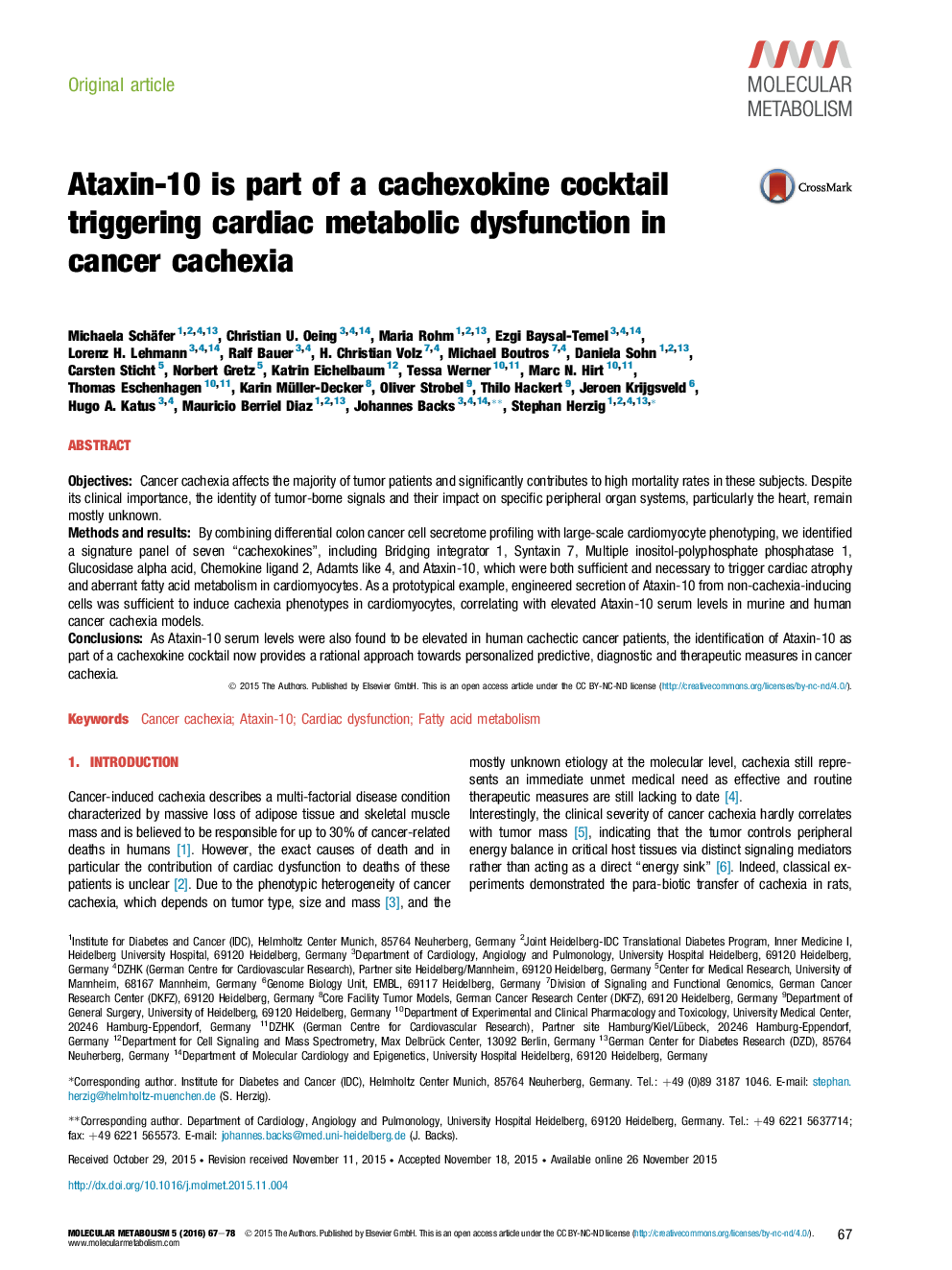| Article ID | Journal | Published Year | Pages | File Type |
|---|---|---|---|---|
| 3001288 | Molecular Metabolism | 2016 | 12 Pages |
•Cancer cachexia induces remodeling of the heart.•Tumor-borne secreted factors mediate cardiomyocyte atrophy.•Selective cachexokines, including Bin1, Stx7, Minpp1, Gaa, Ccl2, Adamtsl4, and Atxn10 provoke aberrant cardiac FA metabolism.•Ataxin-10 levels are elevated under cachectic conditions in mice and tumor patients.
ObjectivesCancer cachexia affects the majority of tumor patients and significantly contributes to high mortality rates in these subjects. Despite its clinical importance, the identity of tumor-borne signals and their impact on specific peripheral organ systems, particularly the heart, remain mostly unknown.Methods and resultsBy combining differential colon cancer cell secretome profiling with large-scale cardiomyocyte phenotyping, we identified a signature panel of seven “cachexokines”, including Bridging integrator 1, Syntaxin 7, Multiple inositol-polyphosphate phosphatase 1, Glucosidase alpha acid, Chemokine ligand 2, Adamts like 4, and Ataxin-10, which were both sufficient and necessary to trigger cardiac atrophy and aberrant fatty acid metabolism in cardiomyocytes. As a prototypical example, engineered secretion of Ataxin-10 from non-cachexia-inducing cells was sufficient to induce cachexia phenotypes in cardiomyocytes, correlating with elevated Ataxin-10 serum levels in murine and human cancer cachexia models.ConclusionsAs Ataxin-10 serum levels were also found to be elevated in human cachectic cancer patients, the identification of Ataxin-10 as part of a cachexokine cocktail now provides a rational approach towards personalized predictive, diagnostic and therapeutic measures in cancer cachexia.
